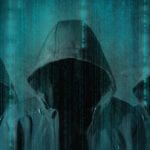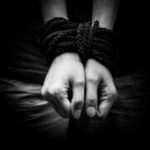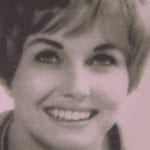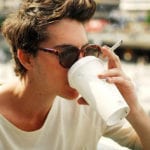 Animals
Animals  Animals
Animals  Weird Stuff
Weird Stuff 10 Weird Things People Used to Do at New Year’s
 Our World
Our World 10 Archaeological Discoveries of 2025 That Refined History
 Weird Stuff
Weird Stuff 10 Fascinating Facts You Might Not Know About Snow
 Miscellaneous
Miscellaneous Top 10 Things Crypto Was Supposed to Change & What Actually Did
 History
History 10 Huge Historical Events That Happened on Christmas Eve
 Music
Music 10 Surprising Origin Stories of Your Favorite Holiday Songs
 History
History 10 Less Than Jolly Events That Occurred on December 25
 Weird Stuff
Weird Stuff 10 Funny Ways That Researchers Overthink Christmas
 Politics
Politics 10 Political Scandals That Sent Crowds Into the Streets
 Animals
Animals 10 Species That Refused to Go Extinct
 Weird Stuff
Weird Stuff 10 Weird Things People Used to Do at New Year’s
 Our World
Our World 10 Archaeological Discoveries of 2025 That Refined History
Who's Behind Listverse?

Jamie Frater
Head Editor
Jamie founded Listverse due to an insatiable desire to share fascinating, obscure, and bizarre facts. He has been a guest speaker on numerous national radio and television stations and is a five time published author.
More About Us Weird Stuff
Weird Stuff 10 Fascinating Facts You Might Not Know About Snow
 Miscellaneous
Miscellaneous Top 10 Things Crypto Was Supposed to Change & What Actually Did
 History
History 10 Huge Historical Events That Happened on Christmas Eve
 Music
Music 10 Surprising Origin Stories of Your Favorite Holiday Songs
 History
History 10 Less Than Jolly Events That Occurred on December 25
 Weird Stuff
Weird Stuff 10 Funny Ways That Researchers Overthink Christmas
 Politics
Politics 10 Political Scandals That Sent Crowds Into the Streets
Top 10 Murder Mysteries Finally Solved Using Forensics
Is the CSI effect real? Some legal and criminal experts have opined that the popularity of forensic TV shows, particularly the CSI franchise, has had a detrimental effect on the justice system. Specifically, they complain that juries have come to expect forensic evidence in every case and are less likely to convict without it. In real life, forensic sciences complement quality police work and have an undeniable place in modern criminal investigations. In fact, these murders have gone cold for years, even decades, until recent forensic developments allowed police to finally catch the killer.
10The Phoenix Canal Killings
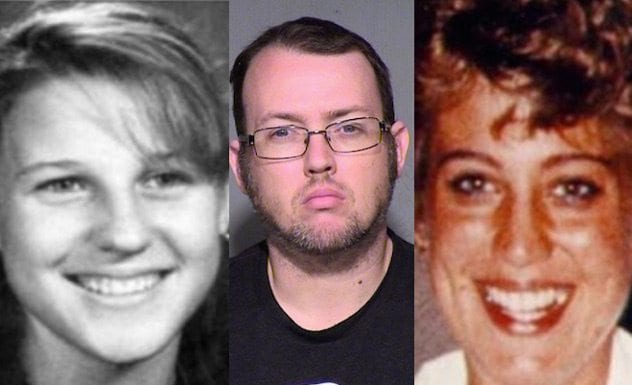
In the early 90s, the body of a young woman was found dumped in the Arizona Canal running through Phoenix. Ten months later, another victim was dumped in the same place. The cases went cold until 2015, when the police got a new lead courtesy of forensic genealogist Colleen Fitzpatrick.
Fitzpatrick cross-referenced the suspect’s DNA, provided by police, against DNA databases already established and available to the public. According to her, there are thousands of these databases—some of them organized by companies or professionals, but most by genealogy enthusiasts who post their DNA profiles in the hopes of finding distant relatives. Since the killer was most likely a man, Fitzpatrick searched only along the Y-DNA line for possible matches.
Within a few weeks, the forensic genealogist tracked down a likely surname—Miller. Police looked through their list of suspects and identified Bryan Patrick Miller. They compared his DNA to that of the suspect and got a match. Miller was arrested in 2016 and is awaiting trial. After numerous delays, his trial is scheduled to start in September 2021.
9The Lake City Torso Murder
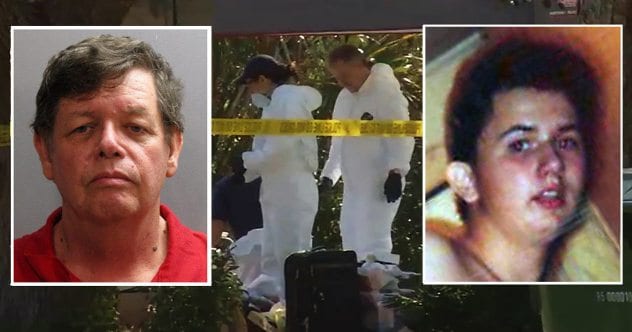
More than 25 years ago, the dismembered body of a young man was discovered behind a gas station in Lake City, Florida. Several items related to the murder were also present at the scene, including a blood-soaked flannel shirt, a mattress cover, bathtub safety pads, and bloody knives that were most likely the murder weapons. Despite having DNA from the killer and the victim, both remained unidentified for decades.
This changed in 2015 when modern tests and an updated DNA database finally identified the victim as 16-year-old Fred Laster. His family confirmed that Laster disappeared in 1994, shortly before the discovery of his mutilated body.
Once police knew the identity of the victim, they established a short list of suspects. On that list was Ronnie Leon Hyde, a former youth pastor who was a friend of the family. According to Laster’s sister, Hyde was the last person to see Fred alive, and he changed his story several times during the initial investigation into Fred’s disappearance in 1994.
With this information, police obtained a DNA sample from Hyde and matched it to DNA from the flannel shirt left at the crime scene. Also, considering that a car similar to Hyde’s Chevy Camaro was seen leaving the gas station, the 60-year-old former pastor was arrested and is now awaiting trial. Since his arrest, Hyde has also been charged with child pornography charges and another cold-case murder from Jacksonville, Florida. Like Miller from the Arizona case above, Hyde is still awaiting trial, with no expected trial date set as of February 2021.
8The Krystal Beslanowitch Murder
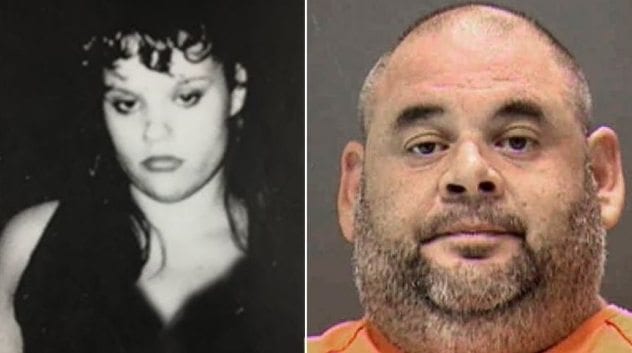
One of the most modern, most sensitive forensic tools helped solve the cold case of a teenager found bludgeoned to death by the side of the Provo River in Utah in 1995. The victim was 17-year-old Krystal Beslanowitch. Next to her, police found the murder weapon—a blood-stained rock. They tried to recover DNA from it, but 90s technology yielded no usable results.
In 2013, investigators analyzed the same rock again, using a modern tool called the M-Vac. It is a wet-vacuum collection system used to collect the smallest traces of DNA. It was used on the side of the stone opposite the bloodstain—most likely the part gripped by the killer. Even after 18 years, the M-Vac collected 21 nanograms of genetic material, which was more than enough for a DNA profile.
The new evidence quickly pointed to a former airport shuttle driver named Joseph Michael Simpson. His DNA was already in the system as he had previously served jail time for another murder. In 2016, Simpson was convicted of Beslanowitch’s murder and sentenced to life without parole.
7The Suspected Brooklyn Serial Killer

In 2004, the Bushwick neighborhood of Brooklyn was shocked when dismembered body parts were found throughout multiple areas, such as a subway tunnel and a recycling plant. They belonged to 19-year-old Rashawn Brazell, but the police never recovered his head. In 2016, a 38-year-old named Kwauhuru Govan was charged with the murder based on DNA evidence.
The charge came following an interview where Govan’s contradictory, evasive answers placed him at the top of the suspect list. At the time, Govan was already in custody on a similar murder charge in Bushwick in 2004. 17-year-old Sharabia Thomas was killed by a blow to the head. Like Brazell, her body was dismembered, stuffed into laundry bags, and discarded in an alley.
Police preserved Thomas’s fingernails as they believed they contained DNA from her killer. Twelve years later, technology advanced to the point where forensic scientists could recover a DNA sample and match it to that of Govan, who was in the system following a robbery in Florida.
Govan protested his innocence with several violent outbursts during court proceedings, but police and prosecutors strongly believe the same person is responsible for both murders. Not only that, but Chief of Detectives, Robert Boyce, stated Govan is being investigated in connection with other crimes, believing there is a “great possibility” that he might be a serial killer.
6 The Sierra Bouzigard Murder
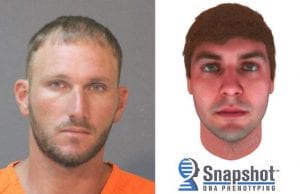
Sierra Bouzigard, a 19-year-old Moss Bluff woman, was found around 7:30 a.m. on Nov. 23, 2009, by a bicyclist on an early morning ride. The cause of death was ruled blunt-force trauma to the head. The case went cold after investigators exhausted all leads and failed to find a DNA match. But it picked up again in 2015 when they employed the aid of new technology.
Using Snapshot, a type of analysis that extracts physical appearance and other information from DNA samples, the Calcasieu Parish Sheriff’s Office released a sketch of the killer in September 2015. Officials said the sketch disproved investigators’ original theory that the killer was a Hispanic male. Instead, it showed him as a white male with fair skin, green or blue eyes, and brown or black hair. Investigators received a number of tips based on the sketch. Then in 2017, a tip pointed them to Blake Russell, who neatly fit the description.
Investigators observed Russell for several weeks and obtained his DNA from a discarded item. The Southwest Louisiana Regional Crime Lab was then able to match the DNA from the object to DNA recovered on Bouzigard’s body. Russell, 31, was charged with second-degree. In 2018, Russell was found hanging in a mop closet in the jail.
5The Murder of Nova Welsh
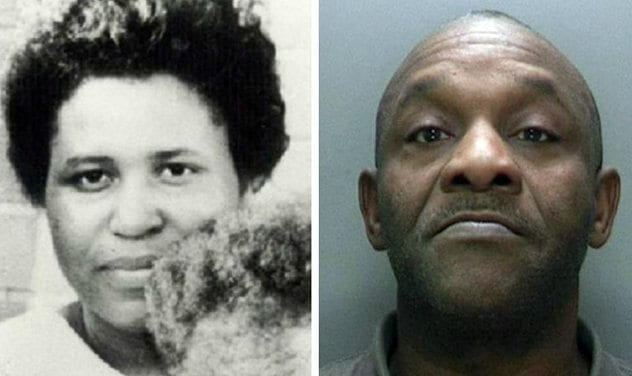
In 1981, 24-year-old Nova Welsh was found dead, stuffed inside a cupboard, in her home in Birmingham, England. She had been strangled and went undiscovered for three weeks. Almost 36 years later, her former partner Osmond Bell was finally charged with her murder thanks to an old piece of gum that yielded a DNA sample that placed him at the scene of the crime.
The gum was initially used to secure the lock on the cupboard where Welsh’s body was found. Bell argued that he performed the impromptu repair job before his former partner’s death. However, the same DNA was found on an envelope containing an anonymous letter blaming another man for Welsh’s murder, trying to deflect suspicion away from Bell.
Bell also had a motive, as Welsh had left him for another man after several instances of domestic violence. The judge saw it as a crime of passion and sentenced the 60-year-old Bell to 12 years for manslaughter.
4The Murder of Karen Klaas

In 1976, 32-year-old Karen Klaas was assaulted in her Hermosa Beach home, which she once shared with her ex-husband, Righteous Brothers singer Bill Medley. She died of her injuries a few days later. Even though police had several viable suspects, and Medley hired his own investigators to track down Klaas’s killer, the case went cold for over 40 years.
Police had the foresight to collect a towel found next to the woman’s body in the hopes that one day it could provide a new lead. As technology advanced, investigators were able to obtain a DNA sample from the towel. With a DNA profile, investigators looked for a match in their database in 1999 and again in 2011, but they came up empty.
Detectives searched for the third time in 2016 and got a hit through familial DNA. A relative of the killer was in the system for a crime committed in late 2011. This new lead helped police identify Karen Klaas’s killer as Kenneth Eugene Troyer. He was gunned down by cops during a prison break in 1982. This was before police began regularly collecting DNA samples from convicted felons, which is why Troyer was not in the system.
This marked the second time familial DNA evidence helped close a case in Los Angeles County. The first was the identification of the notorious Grim Sleeper, Lonnie Franklin.
3The Saturday Night Fever Killer

In 1982, 17-year-old Yiannoulla Yianni was raped and murdered in her North London home, shortly after seen talking to a young man in his 20s on her doorstep. Police found physical evidence at the scene, including semen on the bedspread, but lacked the technology to test it. It was not until 1999 that they were finally able to extract a usable sample, but, even then, they turned up no matches.
Finally, in 2016, police caught a break when a new search found a match—56-year-old James Warnock. He had been entered into the system after being forced to give a DNA sample following a charge of possessing indecent images of children.
At the time of the murder, Warnock lived about half a mile (800 meters) from the victim. He described himself as tall, thin, with dark hair styled to look like Saturday Night Fever era John Travolta. This matched descriptions that were given by neighbors of the man seen talking to Yianni. When presented with the DNA evidence, Warnock claimed he was in a sexual relationship with the victim. The jury did not buy it and found him guilty of rape and murder.
2The Cornell-Story Murders
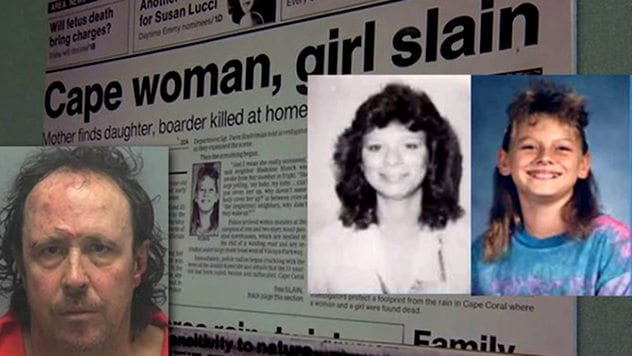
Since the rise of DNA evidence, one of the most ambitious projects in the United States was the establishment of a national database—the Combined DNA Index System (CODIS). It ensures that DNA samples of new criminals are checked against past DNA profiles of unidentified criminals collected at crime scenes and logged into the database. On several occasions, this has helped investigators find new leads in decades-old murders that would have, otherwise, likely gone unsolved forever.
That was the case in 2016 when Joseph Zieler of North Fort Myers, Florida, was arrested for shooting his son with a pellet gun and charged with aggravated assault. When his DNA profile was uploaded to CODIS, it matched a sample taken from an unsolved double murder from 27 years ago! In 1990, the city of Cape Coral, Florida, was rocked when 32-year-old Lisa Story was killed inside her home alongside her roommate’s 11-year-old daughter Robin Cornell.
This was not the first time detectives tried to close the case using modern forensics. In 2015, they tried another technique called DNA phenotyping, which tries to determine what a person looks like based on their DNA profile. The case also garnered plenty of media attention—being featured on America’s Most Wanted three times. Neither technique yielded any solid leads.
1The 50-Year-Old Cold Case
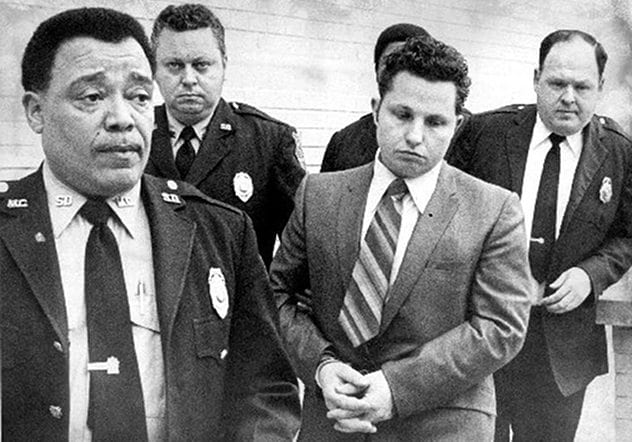
Since 2007, New Jersey State Police have been using the Applied Biosystems AmpFISTR Identifiler amplification kit. Basically, the kit uses a process called polymerase chain reaction (PCR) to amplify a DNA selection many times over so that a usable sample can be retrieved, even from the smallest sources. In early 2016, this technique was used to put to rest one of the Garden State’s oldest unsolved cases—the 50-year-old murder of Mary Agnes Klinsky.
Klinsky was just a teenager in 1965 when her body was found after she was raped and beaten to death. There were no solid leads at the time, but police kept the biological evidence in proper storage, waiting for the right tool that could put it to good use. Eventually, investigators were able to show that Mary Klinsky had been a victim of infamous New Jersey serial killer Robert Zarinsky.
Zarinsky died in 2008 while serving jail time on two other murder charges. According to the established timeline, Klinsky might have been his first victim, but Zarinsky has long been suspected of up to ten homicides. Police are hopeful the new forensic tool will help to solve other long-standing cold cases.
